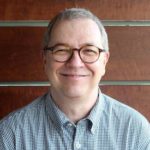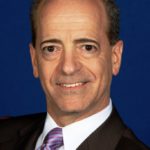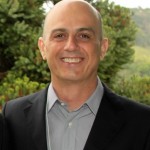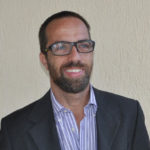FM in Mobile and Radio in Car Panel – Pathways to the Future of Radio

FM in Mobile and Radio in Car Panel - Pathways to the Future of Radio
This will be the focus of this panel, the activation of FM in mobile phones. The American case, the promotion initiatives in Brazil and the proposed regulation will be presented.
The panel will also include a presentation on the RDC project, a technology that allows the display of the station's logo on panels of a new generation of radio receivers in automobiles.
Chair: Marco Túlio Nascimento - director of ZYDigital / SET
Telecommunications Engineer graduated in 1983 from Universidade Federal Fluminense.With a career in the area of broadcasting, worked in the Radio Globo System where he held the position of General Manager of Technology and was responsible for the Engineering, IT and Operations areas.He is currently the director of ZYDigital, a company he founded in 2015 focused on technology consulting such as business support and development of media engineering solutions.He is deputy director of SET's Radio Market Segment.

Pocket Convergence: FM Radio on Smartphones in North America
Speaker: Skip Pizzi - Vice President, Technology Education and Outreach (NAB)
Skip Pizzi is Vice President, Technology Education and Outreach, at the National Association of Broadcasters (NAB) in Washington, DC, USA. His career has spanned the broadcast and digital media industries, working in audio engineering at NPR, and in audio production, media standards and technical policy at Microsoft. He was also an editor at Broadcast Engineeringmagazine, and a columnist for several other international industry publications. He remains a technology journalist, editor, author and trainer today. His most recent book is A Broadcast Engineering Tutorial for Non-Engineers, 4th edition, published by Focal Press. He is currently Associate Editor on the NAB Engineering Handbook, 11th edition, which will be published later this year. Skip serves as Vice-Chair of the Advanced Television Standards Committee (ATSC) Technology Group 3 (TG3), which is developing the ATSC 3.0 standard. He is also a member of the Board of Directors of the Ultra HD Forum. Skip is a graduate of Georgetown University, where he studied Electrical Engineering, International Economics and Fine Arts.

THE RADIOPHONE PROJECT - PROMOTING THE ACTIVATION OF FM IN CELLULARS IN BRAZIL
Speaker: ALEXANDRE BARROS - Presidente da Associação das Emissoras de Radiodifusão do Paraná - AERP
Diretor do Grupo Maringá de Comunicação

The FM in the cell phone and the possibility of regulation in Br
Speaker: Andre Ulhoa Cintra - Radio Director - ABERT
Communications Engineer - Consultant specialized in the planning of broadcasting channels. Director of Radio Abert and currently working on the FM Channel, by ABERT to accommodate the migrant channels. Developed by SET work to accommodate the TV channeling in the process of planning the TV Digital TV channeling.

EXHIBITION OF LOGOMARCA IN AUTO-RADIOS AND SECURITY OF RDS SIGNAL
Speaker: MATHIAS MICHAEL OEELEIN - Radio Data Center (RDC)
MATHIAS MICHAEL OEELEIN, German, represents the company Radio Data Center (RDC) in Brazil since 2014. The DRC is a German company which operates internationally in the Consulting area at the reception frequency of the stations, providing and evaluating all factors, including the topographic data and broadcasting. The DRC also acts providing and implementing logos of broadcasting radio, in the most modern multimedia systems in automobiles. He has a law degree in Germany and Brazil, specialized in contractual and negotiation law, international speaker and author of numerous guides to contractual law, published by the international chambers of commerce of Germany, Austria, Denmark and Poland. Mathias Oefelein is responsible for the implementation of the DRC project in Brazil, aiming at legalizing the use of logos in the new generations of vehicular multimedia systems.

